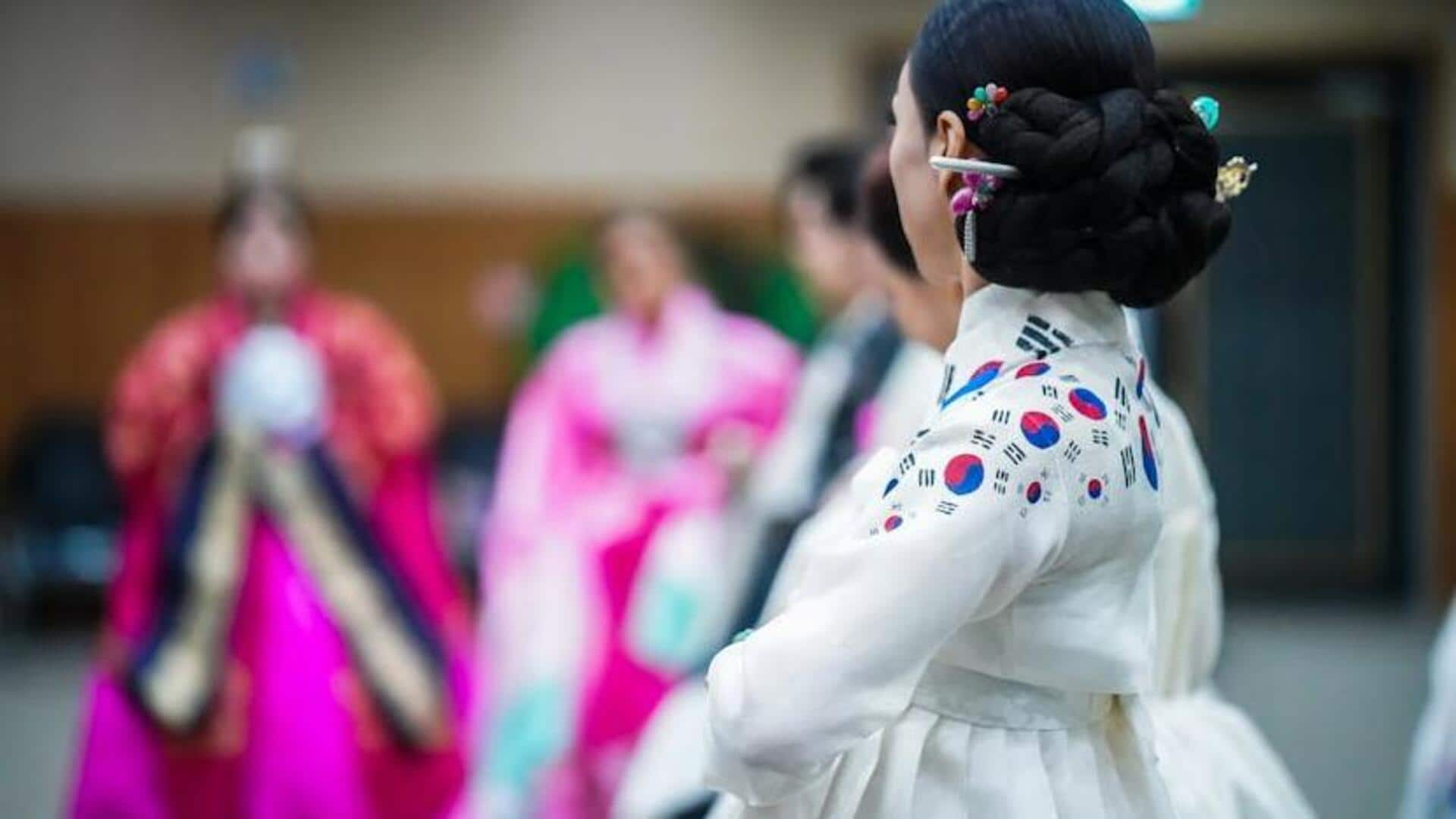
Exploring Korea's traditional dress hanbok
What's the story
The hanbok, Korea's traditional dress, has been a staple of its cultural attire for centuries. With its origins in the Joseon Dynasty, the hanbok is distinguished by simple lines and a rich color palette, reflecting the nation's sartorial heritage. Worn by both men and women, it symbolizes the cultural identity of Korea and continues to be celebrated for its historical significance and aesthetic appeal.
History
Hanbok's historical roots
The hanbok, originating in the Joseon Dynasty, has been shaped by historical changes and cultural exchanges. It was the standard daily attire until Western clothing became widespread in the 20th century. Women's hanbok typically includes a jeogori (blouse) and chima (skirt), while men's consists of a jeogori and baji (pants), reflecting Korea's cultural identity through its traditional dress.
Design
Understanding Hanbok aesthetics
The hanbok enchants with its harmonious colors and elegant silhouette, reflecting Confucian modesty while ensuring ease of movement. Its design, favoring straight lines and minimal embellishment, indicates status: silk signifies royalty, hemp the common folk. These fabric choices are a visual narrative of Korea's historical social hierarchy, making the hanbok a symbol of cultural identity as well as a marker of societal standing.
Style
Styling hanbok today
Hanboks can be seamlessly integrated into daily attire, marrying traditional aesthetics with modern style. Pair a jeogori, the quintessential blouse, with denim for a casual ensemble or choose a streamlined chima skirt for formal gatherings. Minimalist accessories are key; opt for delicate jewelry and contemporary shoes to complement the outfit, allowing the hanbok's unique design to take center stage without overwhelming it.
Tradition
Preserving cultural heritage
Wearing the hanbok is not just a nod to tradition; it's a commitment to sustainable fashion. High-quality hanboks outlast fleeting trends, embodying both durability and timeless style. By choosing these garments, we celebrate Korea's cultural legacy and make a conscious choice to minimize our environmental footprint. This approach to fashion is a chic, eco-friendly tribute to the past that also looks after our future.